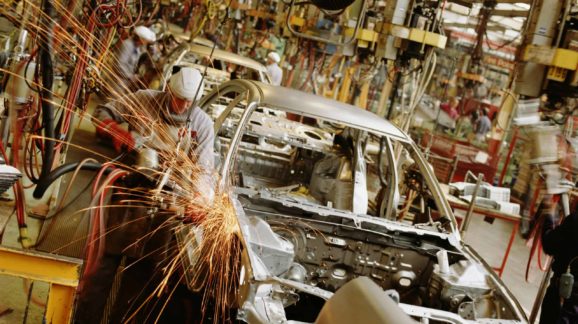UAW strike epilogue: Big Three will continue to shrink

Photo Credit: Getty
The United Auto Workers has won, according to the headlines. What the union has won will force three companies, Ford, GM, and Stellantis, owner of the Chrysler auto brand, to raise their labor costs by about 25 percent in an incredibly competitive market. The “Big Three” aren’t nearly as dominant as they once were. Today, they represent just 40 percent of the domestic auto market.
The UAW has put its members in a precarious position. Ford estimates that the new contract will raise average wages from $32 an hour to $40 an hour and labor costs by $850 to $900 per vehicle. Toyota workers in the US, by contrast, currently get $32 an hour, which the company said it will raise to $35. High labor costs for the Big Three is one reason why auto manufacturing has steadily moved from the so-called rust belt of the upper mid-west to southern states, which now account for 15-30 percent of auto manufacturing. The latest contract will likely accelerate this trend.
This will also likely accelerate the trend to electric vehicles, which don’t require as much labor. That will provide a new means for manufacturers to cut back on labor. Limiting those job losses from the transition was supposedly one of UAW’s goals for the strike. If the union made has any big gains in that area, it isn’t touting it.
The best way the just-completed deal can be made to work for the companies is if UAW succeeds in organizing all of their rivals and then pushing them to raise their labor costs to the same amount. The UAW’s recent efforts in that regard have not been successful.
Things could be worse for the Big three. UAW’s gains are not as big as the headlines would make you think. The union initially demanded a 40 percent raise. The companies offered them 20 percent at first with had been upped to 23 percent shortly after the strike began. After six weeks of random walkouts, UAW agreed to 25 percent. For most workers, at any rate. Reuters reports that some veteran workers will receive 33 percent.
Losing auto worker members, ironically, won’t be that bad for UAW. Only 146,000 of its current 400,000 members work in the auto industry. The UAW has branched out into all sorts of other areas, such as organizing teaching assistants at colleges and universities. There’s no law that says a union’s name must accurately reflect its membership.
So, the UAW will survive if its new contract causes it to lose auto workers, though it may eventually have to remove “auto” from its name. It’ll suck for those members though.